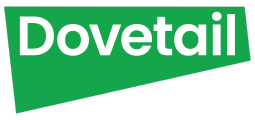Stakeholders as business engines
“Relationships are the engine behind any business plan. It’s conjecture without them,” says Anna-Lisa Wesley of Sapphire & Steel. I love this engine analogy. It conjures for me the sense of impetus when we get stakeholder relationships right – that magic feeling in the room when suddenly you realise you’ve forged a bond of common purpose with key opinion leaders and stakeholders you barely knew six months ago and you know that you are going to get stuff done together!
So how do you reach that stakeholder nirvana?
Like any element of your business plan, you need to be clear about what you’re trying to achieve. Why do you want to engage with these people or groups in the first place? What would be a great outcome? If you can’t answer that, it might not be the right group, or the right time.
How should you approach objective setting? Be honest about where you’re starting from – what’s the current reality? If you’re looking at an entirely new therapy area, your aim might be to understand the patient pathway, prescribing behaviour, or why guidelines aren’t being implemented. If you’re launching a new added value product you might be looking to uncover the real-world needs and wants of patients, clinicians and payors and clarify how your AVP can be part of the solution.
Other initial steps might simply be getting to know the key clinicians or patient group leads and understand what keeps them up at night. And do you know the history between your company and the stakeholders you want to work with? Is it positive or negative? If your predecessor failed to follow through on agreed actions, there may be fences to mend. Ineffective engagement can be worse than no engagement at all. As Lynne Stobbart says: “Engagement … should be a dynamic, reciprocal and mutually respectful relationship. Lip service erodes trust.”
Alignment matters
What are the key issues that need to be considered? Perhaps your project needs support from different stakeholder groups. You’ll need to understand the existing relationships between the groups and be aware of underlying tensions or power struggles. Spoiler alert: they probably won’t tell you!
It goes without saying that your stakeholder engagement objectives have to align with the overall business strategy, but it’s worth making this explicit, so that your internal sponsors are clear about the contribution your activity will make to achieving the company’s business goals.
Lastly, consider the most appropriate formats or forums and the compliance frameworks to support them. One-to-one meetings, advisory boards, focus groups and workshops all deliver different outputs. Being clear about your objectives will help you decide on the best approach. Being clear about the win-win outcome will ensure you get the internal support you need to get that engine running!
At Dovetail we’re on a mission to help pharma achieve great things through outstanding stakeholder collaboration. Get in touch to find out how we can help you.
